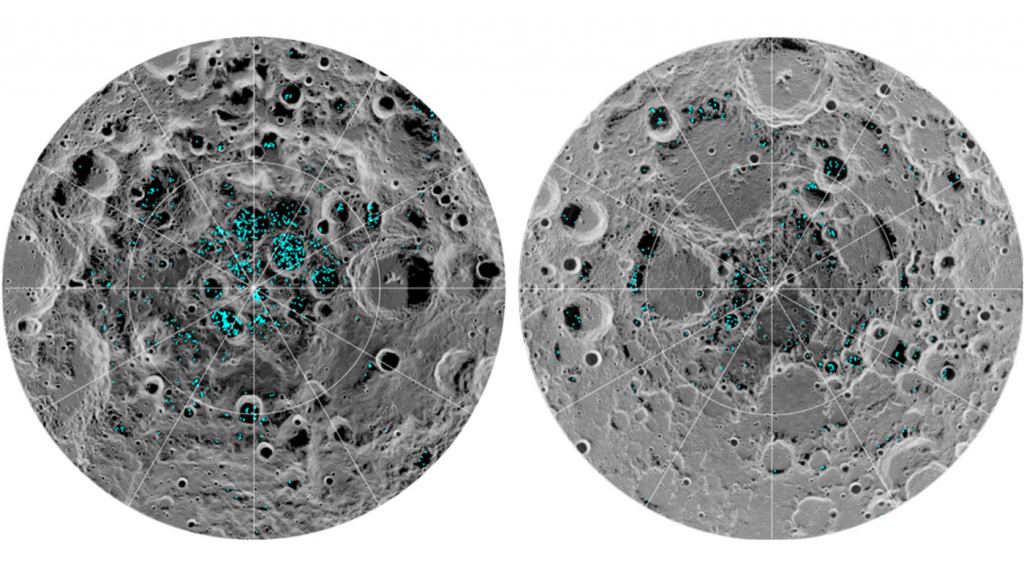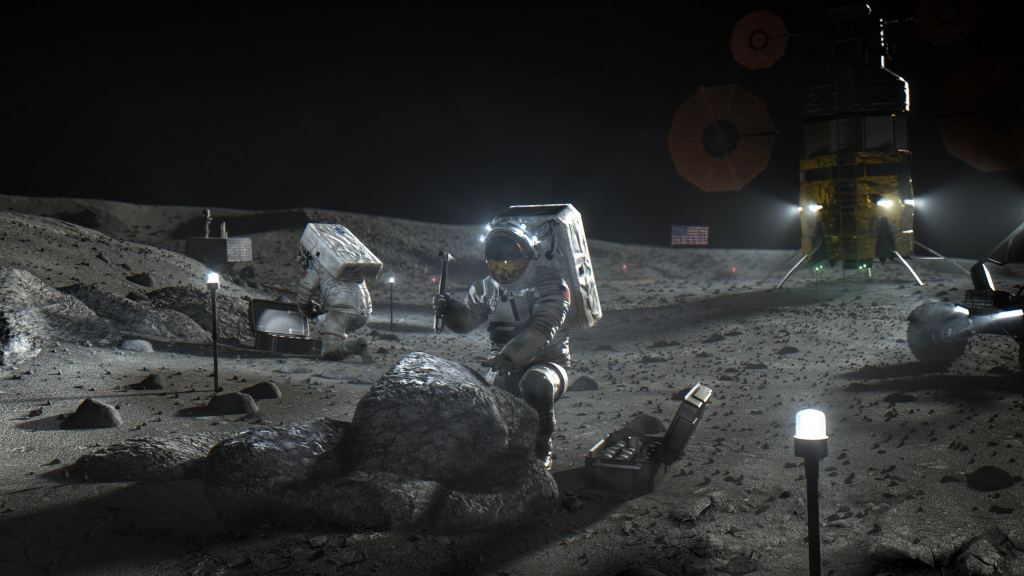Before this decade is out, NASA plans to send astronauts to the Moon for the first time since the Apollo Era and establish a sustainable program of lunar exploration. In order to ensure that future lunar missions are cost-effective and not entirely dependent on Earth for resupply, NASA is looking for ways to leverage lunar resources - everything from water ice to oxygen-rich regolith - to meet their astronauts' needs.
This process, known as In-Situ Resource Utilization (ISRU), is a major part of NASA's plans to explore the Moon in the coming years, as well their long-term plans to send astronauts to Mars. To help them meet this challenge, NASA recently selected 10 proposals through its Small Business Innovation Research (SBIR) and Small Business Technology Transfer (STTR) program to developed ISRU-related technologies.
These ten concepts were selected for Phase I development as part of the SBIR and STTR program's 2020 Solicitation (from a total of 409 technology proposals). Every year, this program (in partnership with NASA's many Mission Directorates and Centers) solicits ideas from the commercial and academic sector for technologies that will address NASA's priority mission needs.
Whereas SBIR is focused on proposals from small businesses, STTR seeks proposals from non-profit research institutes that have partnered with small businesses. This year, six proposals were selected by the former and four from the latter, all of which will be awarded $125,000 for the next 6 to 13 months to further develop their concepts.
As Jim Reuter, associate administrator for NASA's Space Technology Mission Directorate (STMD), said in a recent NASA press statement:
"NASA depends on America’s small businesses for innovative technology development that helps us achieve our wide variety of missions. Whether we’re landing Artemis astronauts on the Moon, sending rovers to Mars, or developing next-generation aircraft our small business partners play an important role."
Consistent with NASA's goals for Project Artemis*, these proposals are largely focused on the extraction and processing of water ice from lunar regolith to create oxygen gas, drinking water, and even rocket fuel. In addition to using local regolith to create building materials, this ISRU concept is key to Artemis* and all of NASA's plans for exploration beyond Low Earth Orbit (LEO).
Hence why NASA and other space agencies are looking to the Moon's South Pole-Aitken Basin as a site for the creation of a lunar base. This region is known to have abundant water ice, which is safely tucked away in craters in this permanently-shadowed region (PSR). After they conduct the first post-Apollo crewed mission to the lunar surface (*Artemis III*), NASA intends to establish the Artemis Base Camp in this region.
For Phase I, companies and non-profits are tasked with performing detailed studies on their proposal for NASA's consideration. The six proposals selected by SBIR include the Thermal Management System for Lunar Ice Miners (TMSLIM) submitted by the Pennsylvania-based company Advanced Cooling Technologies, Inc., in collaboration with Honeybee Robotics (HBR).
This proposal consists of a robust Thermal Management System (TMS) for ice-mining rovers powered by a radioisotope (nuclear) generator. Their system would use the waste heat of this reactor to sublimate water vapor from icy regolith and then use the local temperature environment as a heat sink to refreeze it in a container. This process, they state, would minimize the required energy for ice extraction and vapor collection.
There's also the Solar Concentrator Oxygen Reactor with Continuous Heating and Extrusion of Regolith (SCORCHER) proposed by the Colorado-based company Blueshift (DBA Outward Technologies). Their proposal uses proprietary concentrated solar power (CSP) technology to create a continuous feed reactor that would heat lunar regolith to 2,200 °C (3992 °F) to extract oxygen and produce slag for construction materials.
Paragon Space Development Corporation (based in Tucson, Arizona) was selected to continue the development of its ISRU Collector of Ice in a Cold Lunar Environment (ICICLE) proposal. This system consists of a cold trap that will collect and purify water - by selectively freezing out and collecting water vapor - extracted from the PRSs around the lunar poles.
Another noteworthy proposal is the Sierra Lobo Lunar Ice Mining Using a Heat-Assisted Cutting Tool (SLICER) by Ohio-based developer Sierra Lobo. The SLICER concept calls for a Heat-Assisted Cutter (HAC) to excavate and process ice-bearing regolith from the lunar soil. According to their proposal, this tool would be used by "conventional surface rovers or in a configuration similar to a tunnel boring machine."
Sierra Lobo, it should be noted, has also partnered with the Alabama-based aerospace company Dynetics to produce a reusable lunar lander for *Project Artemis*. Back in April, NASA's announced that design was one of three (alongside SpaceX and Blue Origin) that was awarded a contract through the Administration's NextSTEP-2 program (worth a combined total of $967 million).
Among the four proposals selected by STTR, there's the Standards for Impure Propellants, a propellant-production technology developed by Tennessee-based company Gloyer-Taylor Laboratories (GTL) and the University of Tennessee Space Institute (UTSI). This device will be used to determine the purity of lunar resources to ensure that fuels produced locally are safe and effective.
Connecticut-based company Precision Combustion, Inc. (PCI) and the University of Connecticut were also selected for their new fuel cell design. Known as the Pressure and Low Temperature Tolerant, High Current Density Solid Electrolyte for Propellant Grade Reactants, this fuel cell utilizes a solid electrolyte technology that will allow it to function in the extreme cold of a lunar environment.
The Phase I SBIR contracts will last for 6 months while the Phase I STTR contracts last for 13 months. Those proposals that make it to Phase II (Prototype Development) will receive $750,000 in additional funding to create proof-of-concept prototypes over a two-year time period. As NASA SBIR/STTR Program Executive Jenn Gustetic said:
"A Phase I award is just the first step in helping these small businesses bring their technologies and ideas to market. We know these companies not only need funding, but business guidance and industry expertise to help them develop better products and grow. Our program aims to help each of them in their journeys to commercialization."
All told, NASA will be investing $51 million this year through the SBIR and STTR program to develop technologies that will help them return astronauts to the Moon. Beyond Artemis, the innovative concepts that result from this investment will also facilitate missions to Mars and other destinations in the Solar System.
Further Reading: Parabolic Arc*, SBIR/STTR, NASA*
 Universe Today
Universe Today



